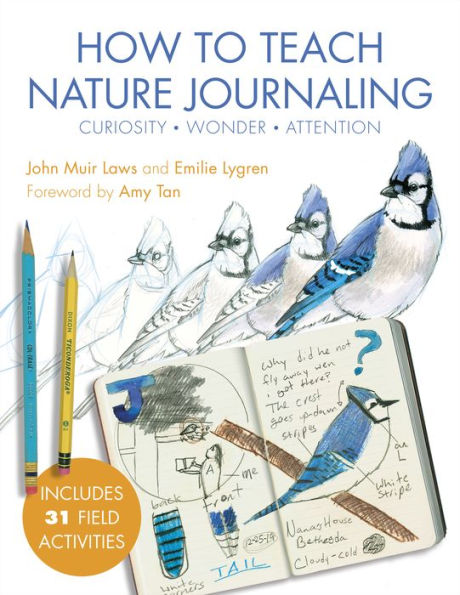In their workshops, John Muir Laws and Emilie Lygren are often asked the how-tos of teaching nature journaling: how to manage student groups in the outdoors, teach drawing skills (especially from those who profess to have none), connect journaling to educational standards, and incorporate journaling into longer lessons. This book, expanding on the philosophy and methods of The Laws Guide to Nature Drawing and Journaling puts together curriculum plans, advice, and in-the-field experience so that educators of all stripes can leap into journaling with their students. The approaches are designed to work in a range of ecosystems and settings, and are suitable for classroom teachers, outdoor educators, camp counselors, and homeschooling parents.
Full-color illustrations and sample journal pages from notable naturalists show how to put each lesson into practice. Field-tested by over a hundred educators, this book includes dozens of activities that easily support the Common Core and the Next Generation Science Standards—and, just as important, it will show kids and mentors alike how to recognize the wonder and intrigue in their midst.
In their workshops, John Muir Laws and Emilie Lygren are often asked the how-tos of teaching nature journaling: how to manage student groups in the outdoors, teach drawing skills (especially from those who profess to have none), connect journaling to educational standards, and incorporate journaling into longer lessons. This book, expanding on the philosophy and methods of The Laws Guide to Nature Drawing and Journaling puts together curriculum plans, advice, and in-the-field experience so that educators of all stripes can leap into journaling with their students. The approaches are designed to work in a range of ecosystems and settings, and are suitable for classroom teachers, outdoor educators, camp counselors, and homeschooling parents.
Full-color illustrations and sample journal pages from notable naturalists show how to put each lesson into practice. Field-tested by over a hundred educators, this book includes dozens of activities that easily support the Common Core and the Next Generation Science Standards—and, just as important, it will show kids and mentors alike how to recognize the wonder and intrigue in their midst.

How to Teach Nature Journaling: Curiosity, Wonder, Attention
296
How to Teach Nature Journaling: Curiosity, Wonder, Attention
296
